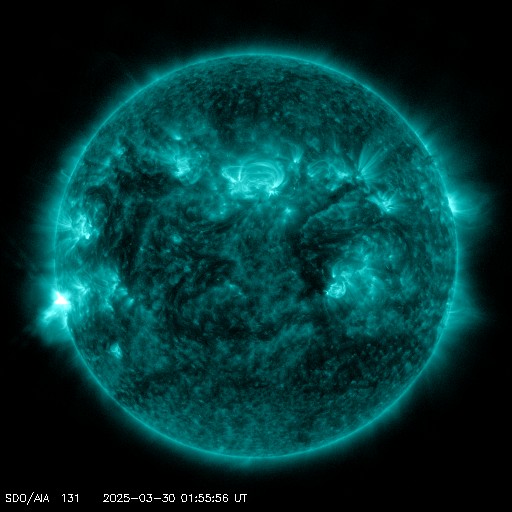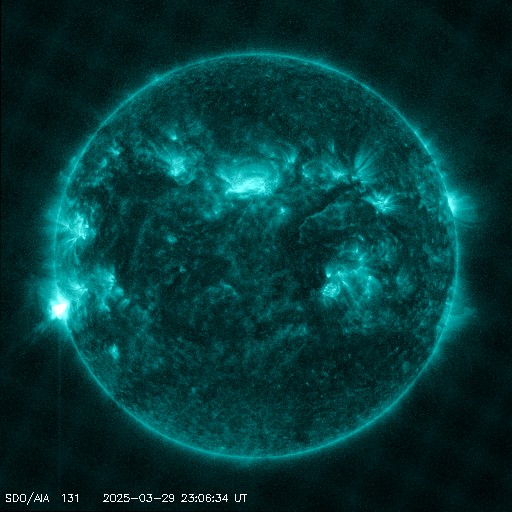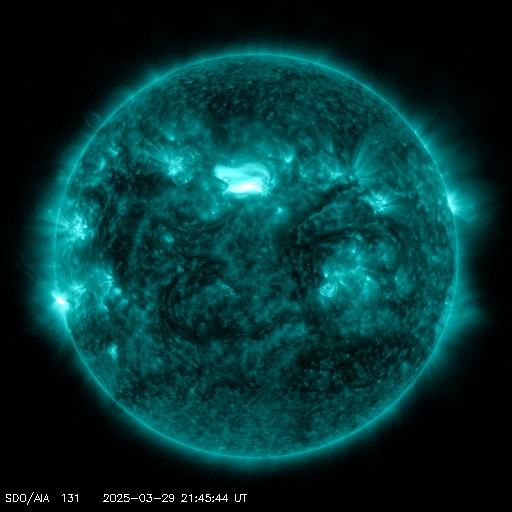M2.4 coronal mass ejection
Tuesday, 10 February 2015 12:44 UTC
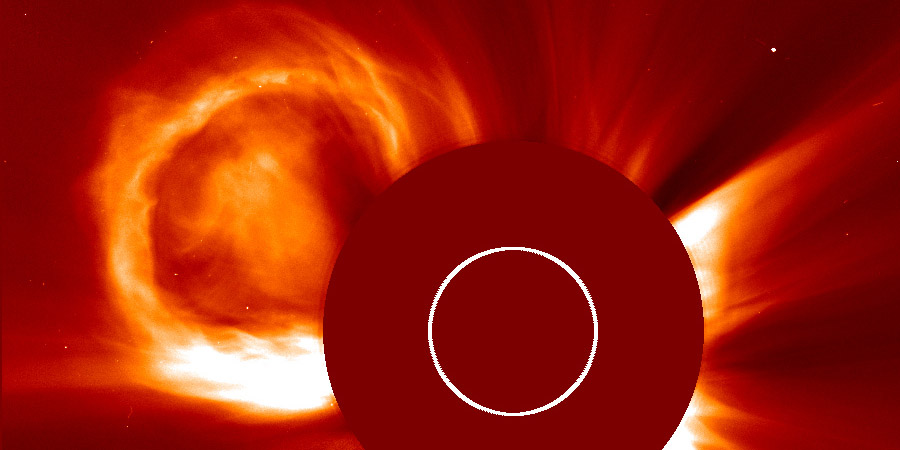
SOHO/LASCO coronagraph imagery is now complete and this gives us the opportunity to analyse the coronal mass ejection which was released during yesterday's M2.4 solar flare. Our first reaction was that this coronal mass ejection is unlikely to affect Earth as sunspot region 2282 was close to the east limb at the time of the eruption. Now that we have enough coronagraph imagery, we are pleasantly surprised that we have to adjust our opinion.
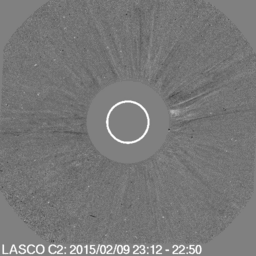
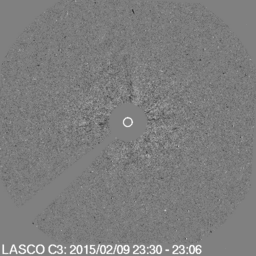
Images: SOHO/LASCO C2 (left) and C3 (right) animations showing the M2.4 coronal mass ejection.
The coronal mass ejection is as expected mainly propagating to the east with an estimated velocity just over 1000 km/s. However, a faint full halo outline can be seen meaning that there is likely an earth-directed component. A strong impact is unlikely but a shock passage could arrive at Earth late on 12 February or early on 13 February. Active geomagnetic conditions are possible with a slight chance for a minor G1 geomagnetic storm when the cloud arrives.
For more news regarding the M2.4 solar flare and the DSCOVR mission please read this article which we published earlier today.
Thank you for reading this article! Did you have any trouble with the technical terms used in this article? Our help section is the place to be where you can find in-depth articles, a FAQ and a list with common abbreviations. Still puzzled? Just post on our forum where we will help you the best we can!
Latest news
Latest forum messages
More topicsSupport SpaceWeatherLive.com!
A lot of people come to SpaceWeatherLive to follow the Sun's activity or if there is aurora to be seen, but with more traffic comes higher server costs. Consider a donation if you enjoy SpaceWeatherLive so we can keep the website online!

Latest alerts
02:09 UTC - Solar flare
Moderate M1.54 flare from sunspot region 4048
01:42 UTC - Radio Blackout
Minor R1 radio blackout in progress (≥M1 - current: M1.24)
Saturday, 29 March 2025
23:21 UTC - Solar flare
Moderate M1.91 flare from sunspot region 4048
22:51 UTC - Radio Blackout
Minor R1 radio blackout in progress (≥M1 - current: M1.1)
21:57 UTC - Solar flare
Moderate M1.45 flare from sunspot region 4048
Space weather facts
| Last X-flare | 2025/03/28 | X1.1 |
| Last M-flare | 2025/03/30 | M1.5 |
| Last geomagnetic storm | 2025/03/27 | Kp5 (G1) |
| Spotless days | |
|---|---|
| Last spotless day | 2022/06/08 |
| Monthly mean Sunspot Number | |
|---|---|
| February 2025 | 154.6 +17.6 |
| March 2025 | 127.5 -27.1 |
| Last 30 days | 127.5 -24.7 |



